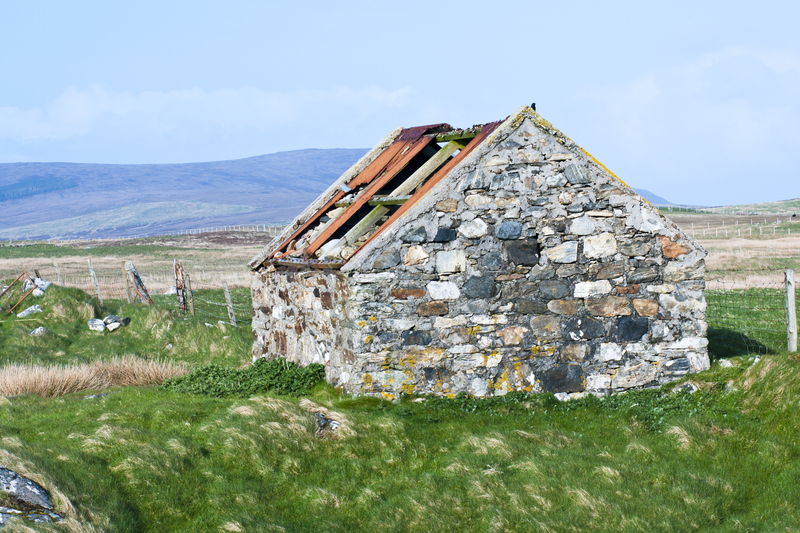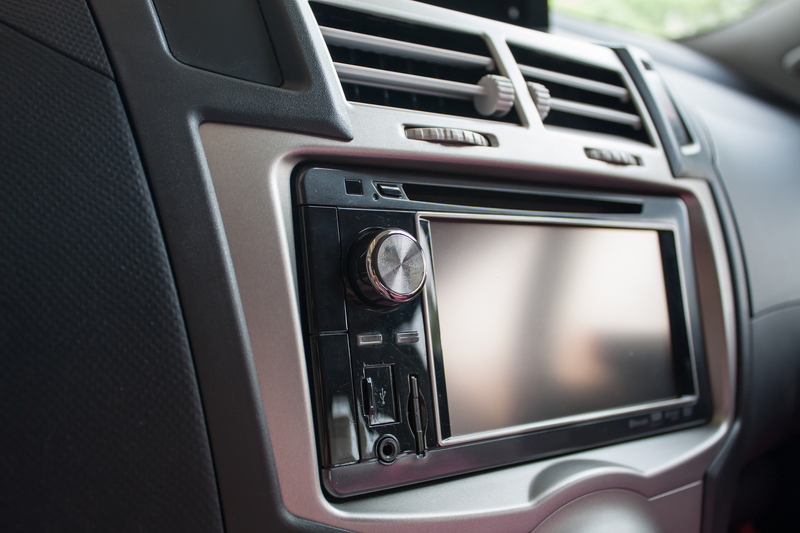The Risks of DIY Piano Moving and Professional Solutions
Posted on 22/05/2025
The Risks of DIY Piano Moving and Professional Solutions
Pianos are not only majestic centerpieces in homes and music halls but also intricate instruments that require delicate handling. If you're contemplating moving a piano without professional help, it's vital to weigh the risks of DIY piano moving against the numerous benefits of hiring professional solutions. This comprehensive guide will explore the dangers associated with moving a piano yourself and outline why engaging experts should be your top consideration.

The Challenge of Piano Relocation
Moving a piano is not comparable to shifting ordinary furniture. The average upright piano weighs between 300 and 500 pounds, while grand pianos can easily exceed 1,000 pounds. Beyond their size and weight, pianos are delicate and composed of thousands of parts--strings, hammers, and soundboards--that can be easily damaged without the right skill and equipment.
Common Types of Pianos That Require Special Handling
- Upright Pianos: Compact but heavy, requiring coordinated lifting.
- Baby Grand and Grand Pianos: Larger and more cumbersome, often requiring partial disassembly.
Each style presents its own set of logistical challenges, making the move complicated and potentially hazardous if attempted without the right expertise.
The Major Risks Associated with DIY Piano Moving
While attempting a self-move may seem cost-effective, there are substantial risks that could result in serious personal injury, costly property damage, and even irreparable harm to your piano. Below, we uncover the most critical hazards:
1. Physical Injury
- Back and Muscle Strain: Lifting a heavy piano improperly often results in pulled muscles or severe back injuries.
- Finger and Toe Crush Injuries: Pianos are awkward, and fingers or toes can easily get crushed during maneuvering.
- Accidental Drops: Balancing a piano up and down stairs or around corners can easily lead to slips and falls, potentially causing severe bodily harm.
Without proper equipment and training, DIY piano moves are a leading cause of injuries during home relocations.
2. Damage to the Piano
- Tuning Problems: Sudden jolts or improper carrying methods can knock the delicate components out of alignment, leading to expensive tuning or repairs.
- Internal Accessory Damage: Mishandling can detach hammers, break strings, or crack soundboards--all of which are critical and costly issues.
- Exterior Scratches and Dents: Doors, walls, and other obstacles easily scratch the instrument, reducing its visual appeal and *value*.
Piano repair costs can quickly surpass those of hiring a professional, especially if serious damage is done to the internal mechanism.
3. Damage to Your Home or Property
- Scratched Floors and Walls: Attempting to pivot a massive piano can nick corners, dent walls, and mar flooring.
- Broken Stairs and Banisters: The concentrated weight of a piano can break banisters or even crack stairs, leading to expensive home repairs.
- Entrances and Doorways: Fitting a piano through tight spaces often damages doorframes or leaves unsightly marks throughout your home.
These damages are not only financial setbacks but can also cause stressful delays during your move.
4. Insufficient Tools and Equipment
Most DIY movers lack essential tools like piano skids, moving dollies, heavy-duty straps, and protective blankets. Not having these increases the risk of accidents and instrument damage.
5. Inadequate Manpower
Even with several friends or family members, there's often a lack of technique and communication needed to move such a unique item safely. A single mistake can jeopardize the entire process.
Why Professional Piano Movers Are the Safer Choice
Tapping into professional piano moving solutions offers a host of significant advantages, including expertise, equipment, and insurance--qualities that dramatically reduce the risks outlined above.
Specialized Knowledge and Experience
- Trained Personnel: Professional movers are specifically trained in handling pianos, understanding their structure, weight distribution, and fragile points.
- Proper Disassembly and Assembly: They know how to safely remove legs, pedals, or lids as needed and reassemble your instrument upon arrival.
- Problem-Solving Expertise: Professional teams can expertly navigate tight turns, stairs, and tricky entrances.
This specialized knowledge can be the difference between a smooth move and a disastrous one.
Advanced Equipment and Tools
Professional movers arrive equipped with:
- Piano Dollies and Skids
- Custom Padding and Covers
- Straps and Heavy-Duty Lifting Equipment
- Specialized Moving Trucks with Climate Control
These items ensure your instrument is fully protected from shocks, scratches, and climate fluctuations during transit.
Comprehensive Insurance and Peace of Mind
Professional piano movers offer insurance coverage to safeguard both your instrument and property. In the rare event of damage, you're financially protected--something DIY efforts can't offer.
Efficient Execution and Cost-Effectiveness
- Time-Saving: Professionals work swiftly and efficiently, often completing moves in a fraction of the time a DIY group would spend.
- Cost-Saving: When accounting for the potential repair bills from personal injuries or damages, hiring a professional solution may ultimately be more affordable.
The True Cost of DIY Piano Moving
At first glance, moving a piano yourself may seem economical--no labor costs and just a few dollars for truck rental. However, hidden expenses can quickly add up:
- Medical bills from injuries
- Repair fees for damaged floors, doors, or stairways
- Specialized tuning or repairs to correct internal or external damage
- Replacement costs for irreplaceable sentimental or antique instruments
Considering these factors, hiring expert piano movers becomes not just a safe option but a smart financial choice as well.
What to Expect from Professional Piano Moving Services
When you engage a professional piano mover, the experience typically includes:
- On-Site Assessment: Movers will evaluate your piano type, property layout, and moving obstacles in advance.
- Pre-Move Preparation: Wrapping and padding the piano, securing moving parts, and planning the safest route out of your property.
- Safe Transport: Using proper vehicles and restraint systems to minimize jostling and environmental exposure.
- Unloading and Reassembly: Setting up your piano in its new location, ensuring it is level, and if necessary, recommending follow-up tuning.
Many companies also offer long-distance piano moving solutions and climate-controlled storage if you need to store your instrument temporarily.
Signs You Should Hire a Professional for Your Piano Move
- Your piano is especially valuable (antique, grand, or unique models).
- Your move involves stairs, tight doorways, or complex routes.
- You lack access to strong helpers or the right equipment.
- You want to ensure full insurance coverage against unexpected mishaps.
- You prioritize your personal safety and peace of mind.
Simple Tips to Prepare for a Professional Piano Move
- Clear the Pathways: Remove any furniture or obstacles that could hinder the moving process.
- Inform Movers About Access Details: Share information about stairs, terrain, or driveway limitations.
- Secure Pets and Small Children: Keep family members safely away from moving areas.
- Schedule Early: Book your piano move well in advance to ensure availability and allow time for an assessment.
Frequently Asked Questions: DIY Piano Moving & Professional Solutions
Can I move a piano with just a few friends?
While it may seem possible, the weight and awkward shape of most pianos make it extremely risky without proper training and equipment. Friends may not be prepared for the coordination or unexpected shifting of heavy instruments, putting everyone at risk.
What can go wrong during a DIY piano move?
Common issues include injuries, property damage, and costly piano repairs. Even minor bumps can affect tuning, and a dropped piano can suffer irreversible structural damage.
How do professional piano movers charge for their services?
Professionals typically base their fees on distance, piano type, complexity of the move, and any additional services (e.g., storage, insurance). Inquire about a written estimate before booking.
Do I need to tune my piano after moving?
Yes. Even with the best care, changes in humidity and physical movement can affect your piano's tuning. It's recommended to schedule a professional tuning soon after the move.
Does homeowner's insurance cover piano moving accidents?
Generally, no. Typical policies do not cover damage incurred during DIY moves. Professional moving services, however, include specific insurance for both property and instrument.

Conclusion: Prioritizing Safety and Value During Your Piano Move
Deciding to move a piano by yourself is a gamble--with your personal safety, your property, and the invaluable instrument itself at stake. The risks of DIY piano moving significantly outweigh any perceived savings. Whether you're relocating across town or to a new state, engaging professional piano moving solutions is the best way to protect your investment, avoid injury, and ensure your cherished piano makes its journey unharmed.
For an instrument as precious as a piano, trust only the experts. Protect your home, your health, and your music--choose professional piano movers for your next move.
Key Takeaways
- DIY piano moves are laden with risks such as injury, property damage, and costly piano repairs.
- Professional movers offer specialized expertise, proper equipment, and insurance coverage for stress-free relocation.
- Consider all hidden costs of self-moving versus the value and safety professional solutions provide.
- Plan and communicate with your professional movers to ensure a smooth and successful piano move.
When it comes to piano moving, let the professionals handle the heavy lifting--saving you time, money, and the harmony of your valued instrument.

